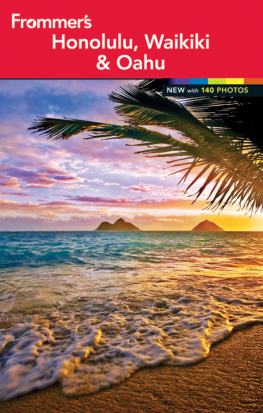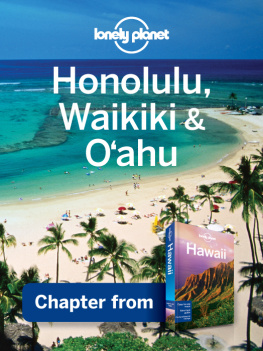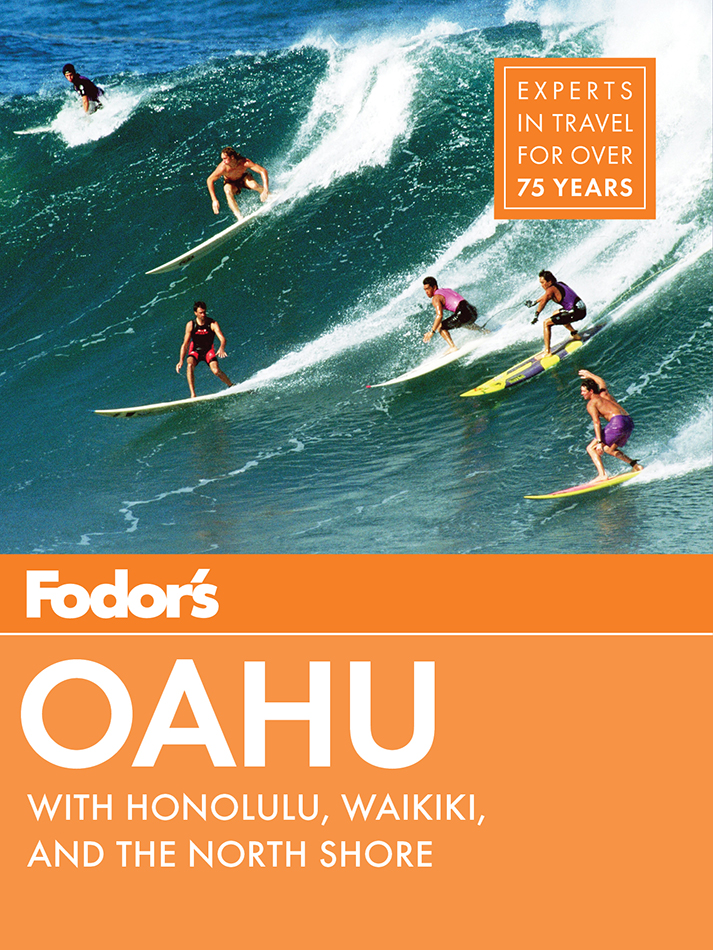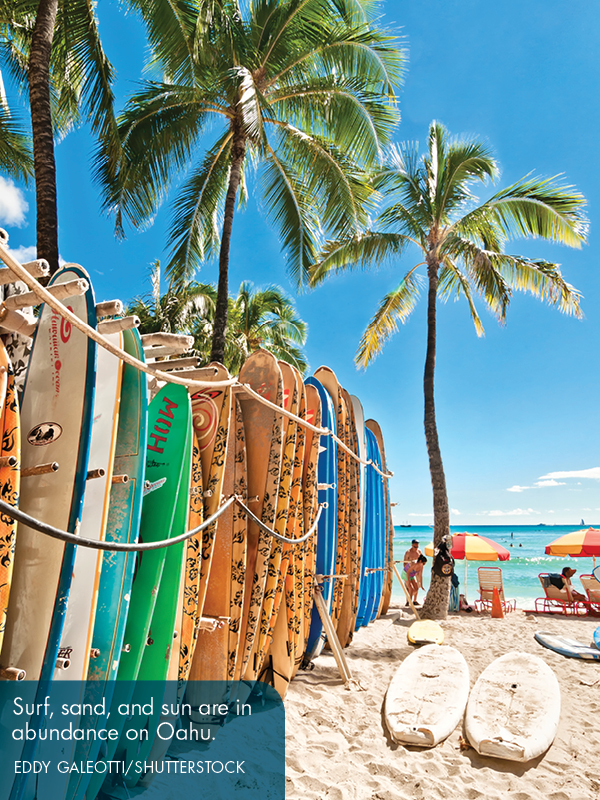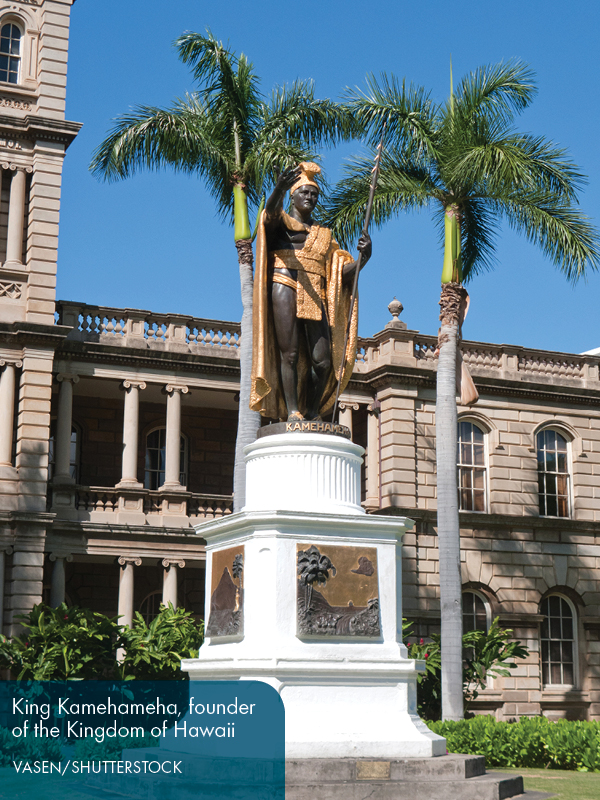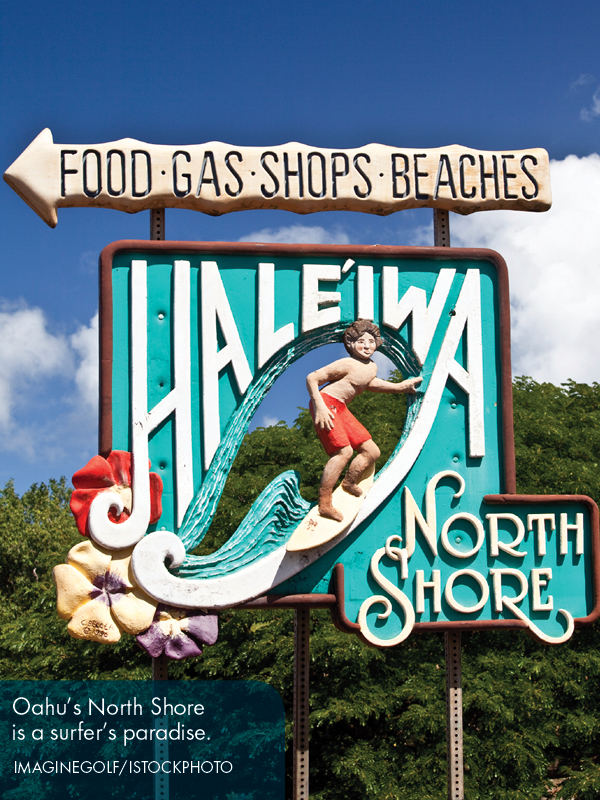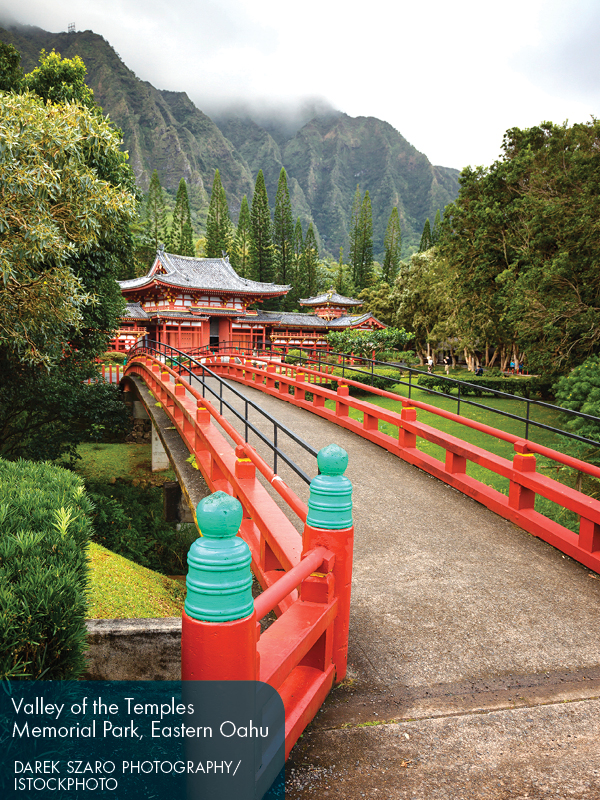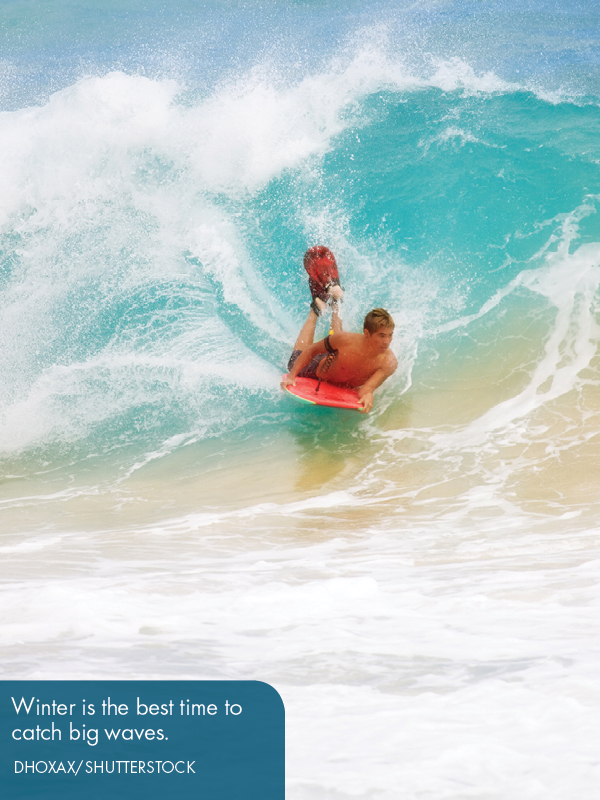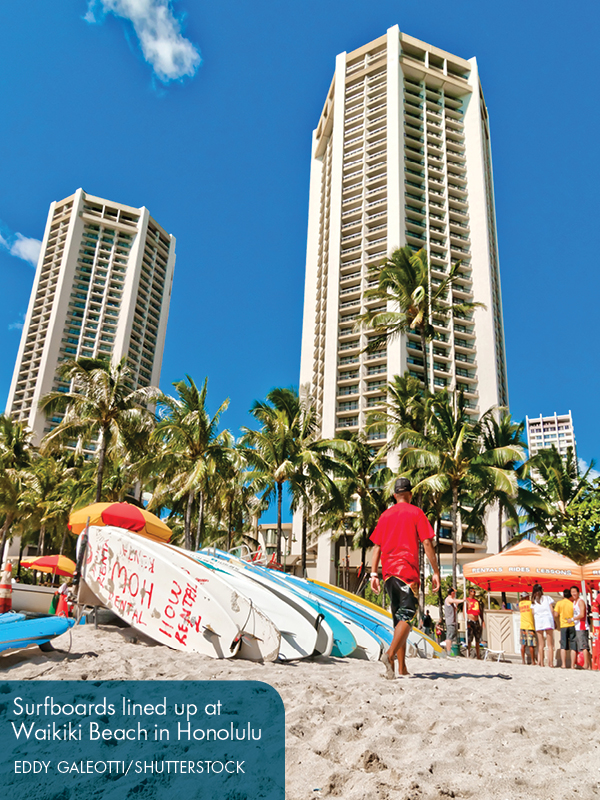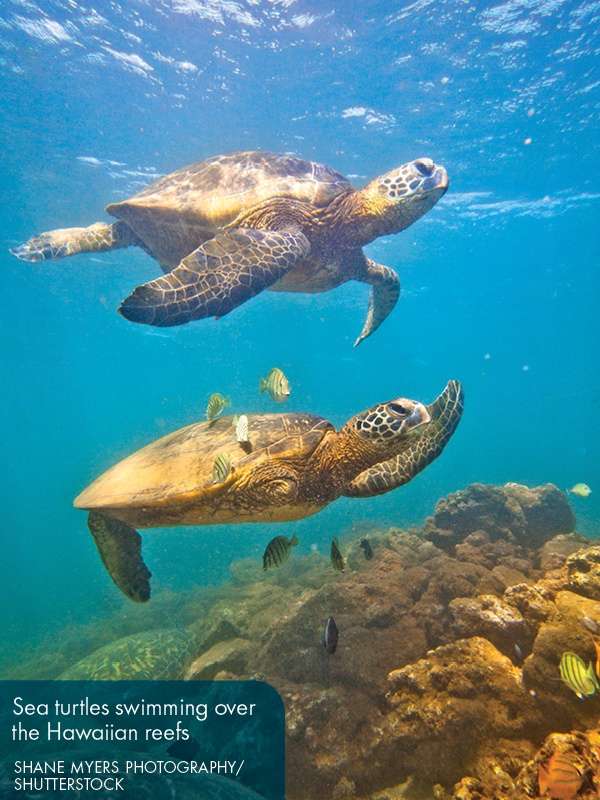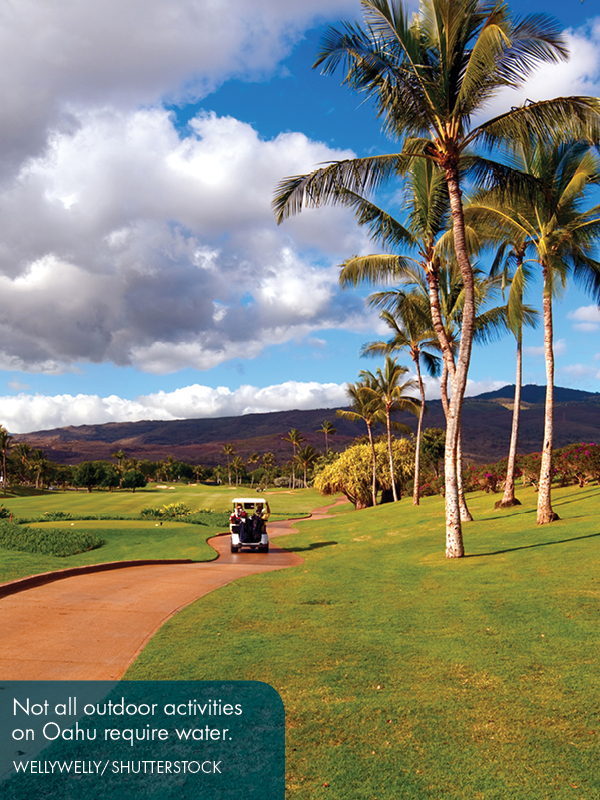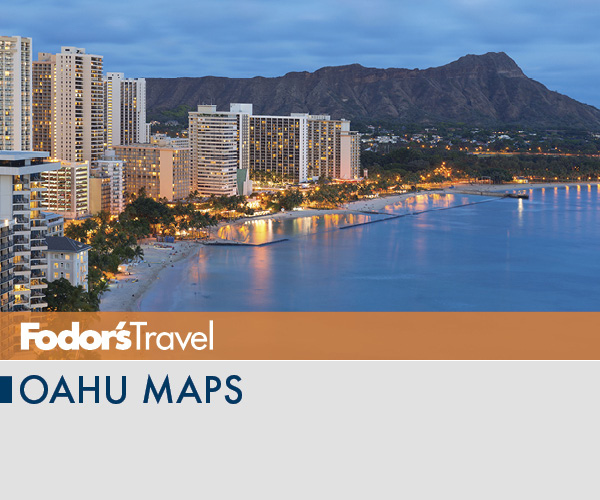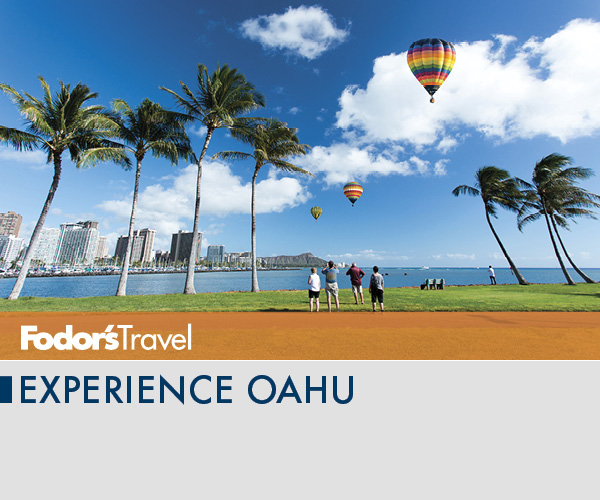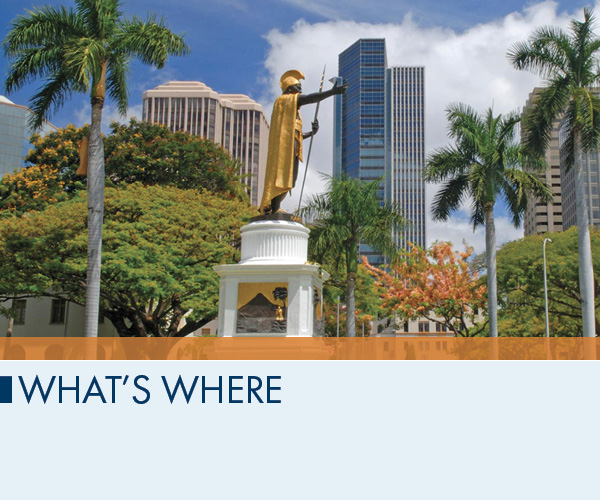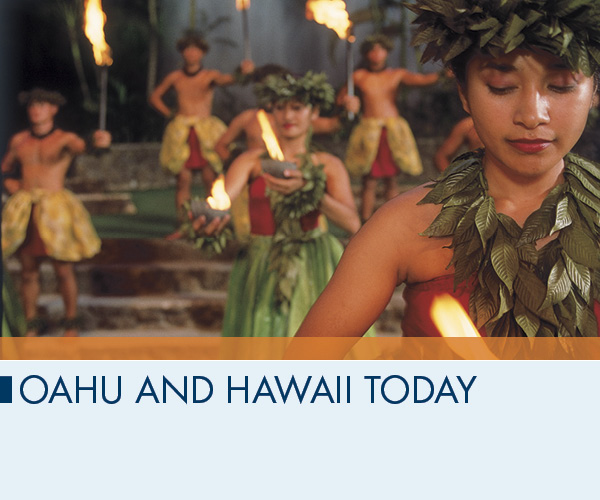Honolulu. The vibrant capital city holds the nations only royal palace, free concerts under the tamarind trees in the financial district, and the art galleries, hipster bars, and open markets of Nuuanu and Chinatown. It also encompasses Waikikidressed in lights at the base of Diamond Head, famous for its world-class shopping, restaurants, and surfand Pearl Harbor, Hawaiis largest natural harbor and the resting place of the USS Arizona , sunk on December 7, 1941.
Southeast Oahu. Honolulus main bedroom communities crawl up the steep-sided valleys that flow into Maunalua Bay. Also here are snorkelers favorite Hanauma Bay and a string of wild and often hidden beaches.
Windward Oahu. The sleepy neighborhoods at the base of the majestic Koolau Mountains offer a respite from the bustling city with long stretches of sandy beaches, charming eateries, ancient Hawaiian fishponds, and offshore islands to explore.
The North Shore. Best known for its miles of world-class surf breaks and green sea-turtle sightings, this plantation town also boasts farms, restaurants, and hiking trails.
West (Leeward) Oahu. This rugged part of the island is finding a new identity as a second city of suburban homes, golf courses, and tech firms.
Central Oahu. Though the interstate cuts through much of this fertile region, its an integral part of Hawaiis rich cultural history. This valley, between the Waianae and Koolau mountains, is an eclectic mix of farms, planned communities, and strip malls.
Nicknamed The Gathering Place, Oahu is the third-largest Hawaiian island and has 75% of the states population. Honolulu is the perfect place to experience the states indigenous culture, the hundred years of immigration that resulted in todays blended society, and the tradition of aloha. The museums and historic and cultural sites will ground you, at least a bit, in Hawaiis history. Honolulu has everything from award-winning restaurants to farmers markets, from legendary surf breaks to trendy nightclubs. But Oahu is not just Honolulu and Waikiki. Its looping mountain trails on the western Waianae and eastern Koolau ranges. Its monster waves breaking on the golden beaches of the North Shore. Its country stores and beaches where turtles are your swimming companions.
Hawaiian culture and tradition here have experienced a renaissance over the last few decades. Theres a real effort to revive traditions and to respect history as the Islands go through major changes. New developments often have a Hawaiian cultural expert on staff to ensure cultural sensitivity and to educate newcomers.
Nonetheless, development remains a huge issue for all Islandersland prices are skyrocketing, putting many areas out of reach for the native population. Traffic is becoming a problem on roads that were not designed to accommodate all the new drivers, and the Islands limited natural resources are being seriously tapped. The government, though sluggish to respond at first, is trying to make development in Hawaii as sustainable as possible.
Sustainability
Although sustainability is an effective buzzword and authentic direction for the Islands dining establishments, 90% of Hawaiis food and energy is imported.
Most of the land was used for mono-cropping of pineapple or sugarcane, both of which have all but vanished. Sugarcane is now produced in only two plants on Kauai and Maui, while pineapple production has dropped precipitously. Dole, once the largest pineapple company in Hawaii, closed its plants in 1991, and after 90 years, Del Monte stopped pineapple production in 2008. The next year, Maui Land and Pineapple Company also ceased its Maui Gold pineapple operation, although in early 2010 a group of executives took over one third of the land and created a new company. Low cost of labor and transportation from Latin American and Southeast Asian pineapple producers are factors contributing to the industrys demise in Hawaii. Although this proves daunting, it also sets the stage for great agricultural change to be explored.
Back-to-Basics Agriculture
Emulating how the Hawaiian ancestors lived and returning to their simple ways of growing and sharing a variety of foods has become a statewide initiative. Hawaii has the natural conditions and talent to produce far more diversity in agriculture than it currently does.
The seed of this movement thrives through various farmers markets and partnerships between restaurants and local farmers. Localized efforts such as the Hawaii Farm Bureau Federation are collectively leading the organic and sustainable agricultural renaissance. From home-cooked meals to casual plate lunches to fine-dining cuisine, these sustainable trailblazers enrich the culinary tapestry of Hawaii and uplift the Islands overall quality of life.
Tourism and the Economy
The over-$10 billion tourism industry represents a third of Hawaiis state income. Naturally, this dependency causes economic hardship as the financial meltdown of recent years affects tourists ability to visit and spend.


